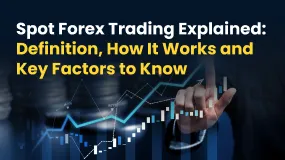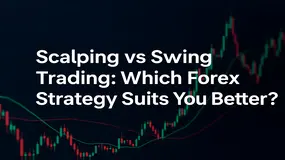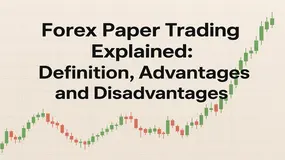简体中文
繁體中文
English
Pусский
日本語
ภาษาไทย
Tiếng Việt
Bahasa Indonesia
Español
हिन्दी
Filippiiniläinen
Français
Deutsch
Português
Türkçe
한국어
العربية
The impact of leverage on trading: how to use it responsibly.
Abstract:The history of leverage and levers can be traced back thousands of years. During the construction of the monumental pyramids, the Ancient Egyptians employed basic lever systems to transfer bulky materials such as stone blocks.The ancient Greek philosopher Archimedes formally described them around 250 BCE. Levers are still used in cranes and excavators, and trading with leverage is yet another example of how the concept continues to be relevant.

The history of leverage and levers can be traced back thousands of years. During the construction of the monumental pyramids, the Ancient Egyptians employed basic lever systems to transfer bulky materials such as stone blocks.The ancient Greek philosopher Archimedes formally described them around 250 BCE. Levers are still used in cranes and excavators, and trading with leverage is yet another example of how the concept continues to be relevant.
So lets take the time to learn about this tool and how to use it wisely.
What is leverage trading?

Leverage in forex is a useful financial tool that allows traders to increase their market exposure beyond the initial investment (deposit). Essentially, it allows traders to control a larger position in a market than they would be able to with their own funds alone. The borrowed funds act as collateral, and the trader is responsible for paying back the loan with interest (if applicable).
With leveraged trading, you get to take advantage of price movements in a market without having to put in a large amount of capital. But since you essentially have more funds to work with, you may generate bigger returns compared to conventional trading methods (but with a bigger risk). The amount of leverage available depends on the broker or exchange. It can range from a small multiple of the traders own funds to a hundred times that amount.
An essential thing to consider is the requirements. Brokers and exchanges typically require traders to maintain a minimum amount of equity in their accounts (margin) to use leverage trading. If the equity falls below a certain level, they can liquidate the position to prevent further losses.
What is the leverage ratio?
The leverage ratio is the ratio of your own capital to the amount of borrowed funds. Some brokers offer massive leverage ratios of up to 500:1; some limit leverage to 5:1 or lower for certain instruments or account types. But its better not to rely on the highest leverage ratios possible.
Assuming you have $1,000 in your trading account, and you want to open a position with a value of $10,000. Your broker offers a leverage ratio of 10:1. In that case, you can use $1,000 of your own capital and borrow $9,000 from the broker to make the trade, which will significantly raise the value of your trade.
How does unleveraged trading work?
Unleveraged trading is just “normal” trading. It refers to trading financial instruments without using any borrowed funds or leverage so you operate with your own capital to open positions in the market.
In this scenario, there is a natural limit to the size of your positions — the amount of capital you have determines the maximum size of the trade. For instance, you want to buy 10 shares at a price of $10 per share, which would cost you a total of $100. If the share price then increases by 10%, the value of your trade would increase by $10, resulting in a total account balance of $110. If the price decreases by 10%, you will lose $10.
Unleveraged trading is a safer option for traders who dont want to risk incurring significant losses. If you follow optimal position sizing, there is little chance of all your positions being completely liquidated due to market fluctuations. But smaller positions equal smaller potential returns.
How does leveraged trading work?
To start trading with leverage, you‘ll need to open a margin account with a broker who offers it. The broker will typically require you to deposit an initial margin amount, which is a percentage of the total value of the trade. The amount depends on the asset you’re trading and the leverage ratio youre opting for.
The moment you‘ve opened a margin account and made your deposit, you can use the funds to enter trades. The broker will provide you with access to a trading platform where you can buy and sell assets with leverage. You’ll be able to see your total exposure, margin used, and potential profit or loss in real time.
Now, lets say that you decide to use a leverage ratio of 1:10. You could open a position worth $1,000 by putting down just $100 as collateral. If the share price increases by 10%, your returns would be $100, and your total account balance would be $200. However, if the price declines by 10%, then you will lose $100.
The process of leverage trading
Here is how a leveraged trade on the EUR/USD currency pair may develop:
1. Choose an underlying asset. Lets say you want to trade EUR/USD.
2. Determine your position size. You decide to enter a position size of 100,000 units, which is equivalent to one standard lot.
3. Choose a leverage ratio. Your broker offers a leverage ratio of 50:1 for the EUR/USD currency pair, so you decide to access a position size 50 times larger than your initial margin.
4. Deposit your margin. If there is a 2% margin, youll need to deposit $2,000.
5. Borrow the funds. Your broker will provide the remaining 98% of the trade value, which is $98,000.
6. Monitor your position. Any profit or loss on your trade will be calculated on the full position size of $100,000, not just your margin amount.
Advantages and disadvantages of leverage trading
Advantages:
• Increased buying power – With leverage, traders can access more funds than they have in their accounts. As a result, they get to take larger positions than they would be able to with their own funds alone.
• Potential for higher returns – Leverage has the potential to turn small results into big achievements, like a multiplier effect on returns.
• Diversification – It allows traders to take multiple positions across different markets and instruments, which helps them spread their risk.
Disadvantages:
• Increased risk – Just like leverage has the potential to bring both higher rewards, the same goes for higher risks. If the market goes against you, using leverage will put you in hot waters.
• Stop out – This is an automatic closure of leveraged positions when your account balance falls below a certain level (set by your broker).
• Fees and interest – Like any loan, leverage comes with charges. These fees can add up quickly and can eat into profits or even turn a winning trade into a losing one.
It‘s worth mentioning that this tool is more popular among experienced traders rather than beginners. It doesn’t mean that beginners can‘t use leverage trading. But leveraged trading takes a good understanding of market dynamics and trading strategies. Losses can quickly add up if trades go against the trader’s expectations, and not everyone is equipped to handle that.

Disclaimer:
The views in this article only represent the author's personal views, and do not constitute investment advice on this platform. This platform does not guarantee the accuracy, completeness and timeliness of the information in the article, and will not be liable for any loss caused by the use of or reliance on the information in the article.
Read more

Checkout the FCA Warning List of Unauthorised Firms Now!!
The Financial Conduct Authority (FCA) in the UK has published the FCA Warning List- October 2025, alerting forex traders and investors about unauthorized brokers. To safeguard your funds and avoid scam. Checkout the Full warning list below

Spot Forex Trading Explained: Definition, How It Works and Key Factors to Know
Want to settle your forex transactions within a few days? You have an excellent alternative in forex spot trading, where currencies are traded for immediate delivery. These transactions are usually settled within two business days. Contrary to futures contracts, where prices are locked in for a future date, spot trades happen at existing market prices (spot rate). But have you wondered what determines the value of these trades? The answer is the spot exchange rate. As the spot foreign exchange market remains one of the largest and most liquid markets around, spot trading can be immense in value and scale.

Scalping vs Swing Trading: Which Forex Strategy Suits You Better?
Confused about which to choose between scalping and swing trading? The basic difference between the two is this - While scalping involves quick trades meant to earn small profits, usually within minutes, swing trading focuses on larger price movements over a few days or even weeks. Keeping this in mind, we have shared the definition of scalping and swing trading, their pros and cons, and other critical insights. Keep reading to learn about which is better - forex scalping vs swing trading.

Forex Paper Trading Explained: Definition, Advantages and Disadvantages
Want to test yourself before taking a plunge with full-on forex trading? You need paper trading, which is also called Demo Trading. Derived from the stock market, the term ‘paper trading’ was practised by investors who wrote their investment ideas on paper and found out whether their ideas remained successful as the market moved. Be it short-term traders or long-term ones, they all hesitate when placing trades for the first time for the sheer concern of losing capital. This is where forex paper trading comes as a differentiator. In this article, we have shared details regarding its operational framework, advantages and disadvantages. Read on!
WikiFX Broker
Latest News
How to Add and Take Out Money from Amillex Broker: A Complete Guide
FCA warning: These Firms are on the list
Ponzi Scheme Operator Sentenced to 14 Years in Western Australia
Dubai VARA Warns Against Vesta Investments
Don’t Get Scammed: A Roundup of Common Online Fraud Tactics in Forex
T4Trade broker Review 2025: Is T4Trade Regulated?
Chicago PMI Beats But Remains In 'Contraction' For Second Straught Year
Firsttrade Review: Traders Raise Ponzi-Style Scam Concerns, Withdrawal Denials & More Issues
Voices of the Golden Insight Award Jury | David Bily, Founder and CEO of Moneta Markets
Spot the Ghost Brokers This Halloween | No Treats for Scams!
Currency Calculator



